Optimization Google Ads: A Consultant's Guide to Better ROIs
- Chase McGowan

- 16 minutes ago
- 14 min read
Optimizing your Google ads isn't a "set it and and forget it" task. It's the constant, hands-on process of refining campaigns to squeeze every drop of performance from your budget. This is where an expert partner makes all the difference.
It’s all about making smart, data-backed tweaks to your keywords, bids, ad copy, and targeting. This is the difference between bleeding cash with a bloated agency and building a real engine for profitable growth with a dedicated specialist.
Why Your Agency Is Failing at Google Ads Optimization
Are you sick of paying hefty agency fees for results that are just… meh? You’re not the only one. So many businesses get stuck in a loop of templated reports, junior account managers, and cookie-cutter strategies that protect the agency’s profit margins, not yours.
Here’s the hard truth: most big agencies are built to scale their operations, not your business. Your account becomes another cog in their machine, managed with a one-size-fits-all playbook that leaves a ton of your money on the table.
The Bloated Agency Model
Large agencies live and die by their standardized playbook. They roll out the same general strategies for dozens, sometimes hundreds, of clients, completely ignoring the unique nuances of your industry or market. This system is efficient for them but incredibly inefficient for your wallet.
A huge chunk of your fee is just funding their overhead—think fancy offices, sprawling teams, and administrative bloat. That money should be invested in expert-level strategy focused solely on your account, not propping up a disconnected corporate structure.
The real problem with the typical agency model is that you're paying for their infrastructure, not for genuine expertise. As a dedicated consultant, my success is tied directly to your ROI. That's a real partnership.
The Consultant Advantage
When you work directly with me, an expert consultant, the whole game changes. You’re no longer being bounced between account managers. You have one dedicated specialist who is both the strategist and the one in the trenches doing the work. This creates a few killer advantages:
Deeper Strategic Alignment: I take the time to get inside your business. I learn what makes you tick, ensuring every single optimization is aimed at your profit goals, not just fluffy metrics like clicks or impressions.
Complete Accountability: There’s nowhere to hide. As the person who recommends the strategy, I'm the same person implementing it and reporting on the results. This creates a level of ownership you’ll never find in a big agency where responsibility is diluted across a team.
Cost-Efficiency: With a consultant, your money goes directly into expert-level work on your account. There’s no inflated overhead, which means more of your budget is actually working to drive results.
I've written a whole guide on how expert Google Ads management services consistently outperform the traditional agency approach. This hands-on, specialist-led optimization is how you finally unlock what your campaigns are truly capable of.
Building a Granular Account Structure That Actually Works
Most large agencies treat Google Ads account structure like an assembly line. They use templates, plug in keywords, and call it a day. It’s fast for them, but it’s a disaster for your budget because it completely ignores the single most important factor in a winning campaign: user intent.
A cookie-cutter structure forces you to serve generic ads to a diverse audience by lumping dissimilar keywords together. This mismatch is why so many campaigns bleed money. As a specialist, I build accounts from the ground up, treating the structure like the architectural blueprint it is. Getting this foundation right is the first and most critical step in effective optimization of google ads performance.
Beyond Generic Keyword Buckets
The goal here is simple: achieve maximum relevance between a user's search, your ad, and your landing page. When these three things align perfectly, your Quality Score climbs, your cost-per-click (CPC) drops, and your conversion rates go up. Big agencies often skip this because their model isn’t built for the time-intensive work true granularity requires.
They might create a single ad group for "running shoes," stuffing it with everything from "men's trail running shoes" to "women's marathon shoes" and "cheap running sneakers." This forces them to write a vague ad that speaks to no one. In contrast, my approach deconstructs this, creating separate, highly-themed ad groups for each specific intent. This way, every user sees a message that speaks directly to them.
This infographic breaks down the difference between a typical agency workflow and a focused, expert strategy for Google Ads optimization.
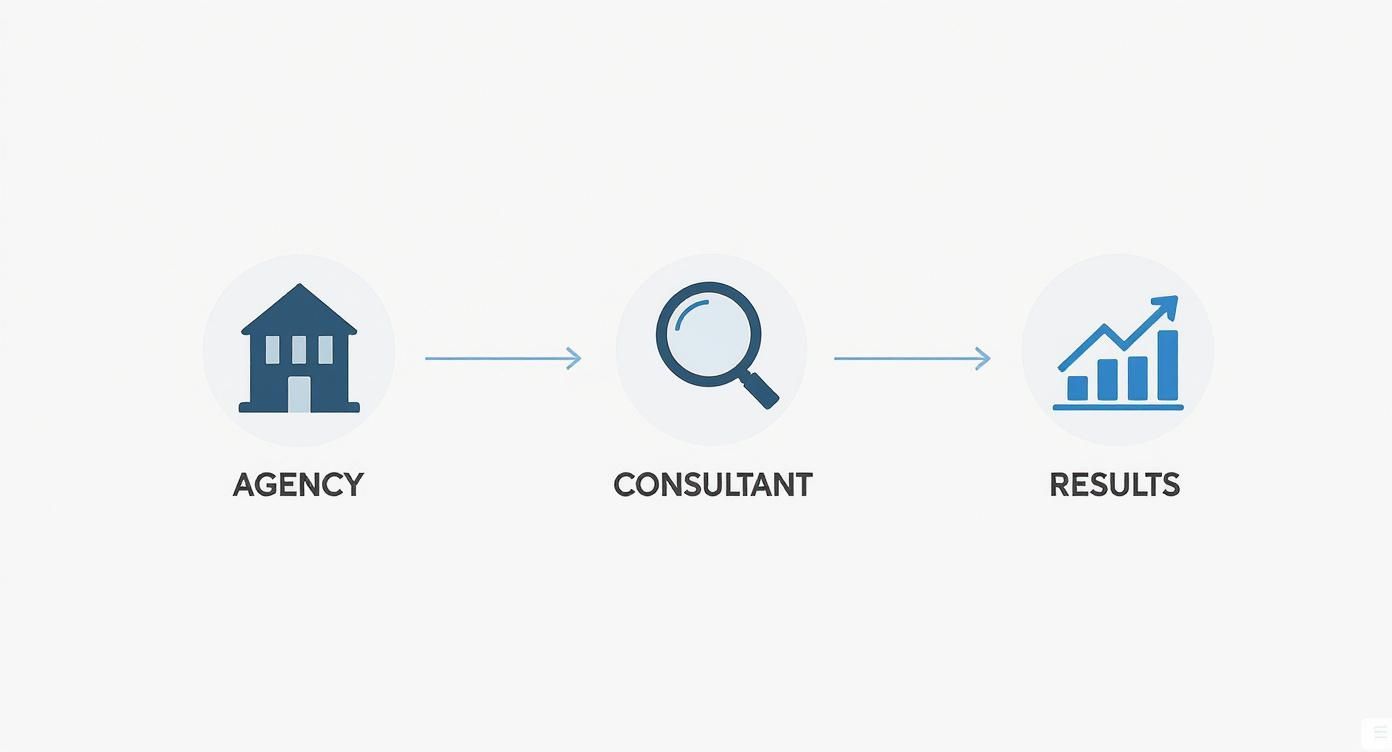
As you can see, a detailed, consultant-led analysis leads directly to better results, cutting out the waste baked into the bloated agency model.
Single Keyword Ad Groups vs. Themed Ad Groups
One of the first strategic decisions is whether to use Single Keyword Ad Groups (SKAGs) or tightly themed ad groups. There's no single right answer—it depends entirely on your business goals and keyword landscape. An agency will default to their standard method, but as a consultant, my approach is tailored to what your data dictates.
Single Keyword Ad Groups (SKAGs)SKAGs are exactly what they sound like: one ad group for one single keyword (and its match type variations).
When I Use Them: SKAGs are perfect for your highest-value, highest-volume keywords. If a specific keyword consistently drives the most profit, giving it a dedicated ad group allows for a perfect ad-to-keyword message match and maximum control over bids.
Real-World Example: For an e-commerce store, a keyword like "buy black leather tote bag" is a prime candidate for a SKAG. You can write an ad with the headline "Buy Black Leather Tote Bags" and send users straight to that exact product category page.
Tightly Themed Ad GroupsThese groups contain a small, closely related set of keywords that all share the exact same user intent.
When I Use Them: This is the workhorse of most accounts. They’re perfect for grouping keywords with minor variations that don’t justify creating a whole new ad group for each one.
Real-World Example: A local plumber could group "emergency plumber near me," "24/7 plumbing service," and "urgent pipe repair" into one themed ad group. The intent is identical, so a single, powerful ad can serve all three queries effectively.
Choosing between SKAGs and themed groups isn't a matter of preference; it's a strategic choice based on data. I analyze search term reports to identify which keywords have earned the hyper-focused SKAG treatment and which can be grouped for efficiency. An agency managing 50 accounts doesn't have time for this level of detail.
This is where true optimization begins. By meticulously organizing your campaigns and ad groups, you create a system that’s not only more effective but also far easier to manage and refine over time.
For a deeper dive, check out our complete guide to Google Ads account structure, where we break these concepts down even further. This foundational work sets the stage for everything that follows, from ad copy testing to landing page optimization.
Focusing on Metrics That Drive Profit
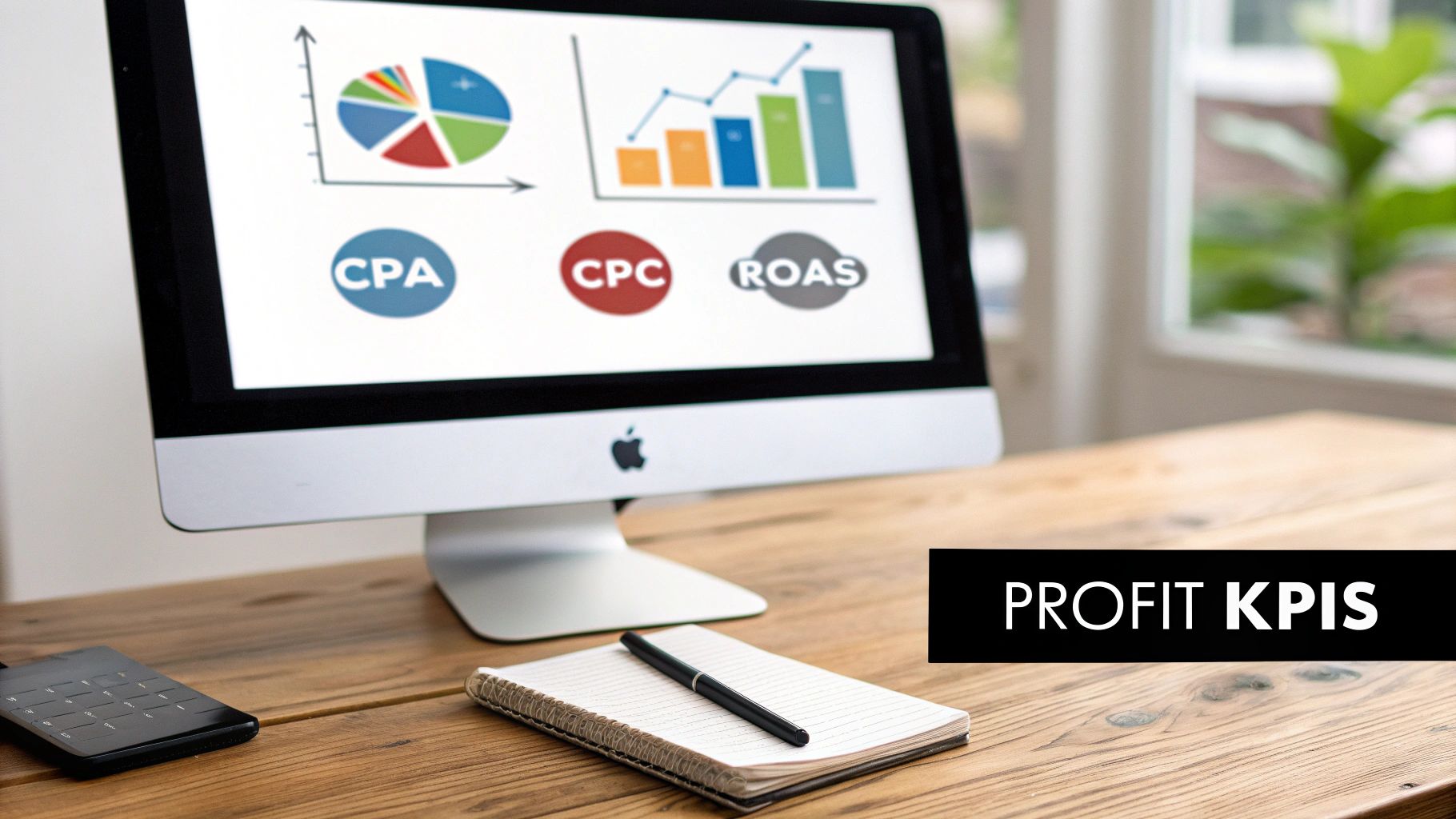
It’s easy to get dazzled by big numbers. Large agencies often lead with impressive-sounding figures for impressions, clicks, and click-through rates (CTR). But focusing on these is like judging a restaurant by how many people look at the menu instead of how many actually buy a meal. It's a classic distraction from what really matters: your bottom line.
A seasoned consultant’s approach is fundamentally different. My focus is surgical, zeroed in on the Key Performance Indicators (KPIs) that directly translate into revenue and profit. This is where real financial accountability begins.
The real story is in the relationship between metrics like Cost Per Click (CPC), Cost Per Acquisition (CPA), and the ultimate measure of success—Return on Ad Spend (ROAS). This is how you make sure every dollar spent is working to make you more money.
Decoding Your Campaign's Financial Health
To really get a grip on profitability, you have to see how your core metrics play off each other. A high CTR feels great, but if those clicks aren't converting, you're just paying for expensive window shopping. Likewise, a low CPC seems like a win, but not if it’s bringing in tire-kickers who never become customers.
As a consultant, I diagnose an account's health by digging into these deeper financial indicators. For instance, a campaign with a $1.50 CPC might seem better than one at $3.00, but what if the cheaper clicks never convert? Optimizing for the right metrics can improve campaign efficiency by 20%-30%, cutting waste and boosting real conversions. This is a level of analysis that big agencies, managing dozens of accounts with cookie-cutter strategies, just don't have the bandwidth for.
The most dangerous assumption in Google Ads is that cheaper is always better. I've often recommended increasing a client's CPC to target higher-intent keywords. The result? A higher cost per click, but a dramatically lower cost per qualified lead, which explodes their ROAS. This is a strategic risk a junior agency manager would never take.
Consultant vs Agency KPI Focus
The difference in approach often boils down to incentives. Big agencies need to show activity across a huge portfolio, so vanity metrics are easy wins. My success, on the other hand, is tied directly to your profitability.
The table below breaks down this crucial difference in mindset.
Consultant vs Agency KPI Focus
Metric Category | Typical Agency Focus (Vanity Metrics) | Expert Consultant Focus (Profitability Metrics) |
|---|---|---|
Traffic Quality | Clicks and Impressions | Conversion Rate and Lead Quality |
Cost Efficiency | Cost Per Click (CPC) | Cost Per Acquisition (CPA) |
Overall Success | Click-Through Rate (CTR) | Return On Ad Spend (ROAS) |
This really highlights the shift from asking "How many people saw our ad?" to "How much profit did our ad generate?" It's a critical distinction. Before you can even have that conversation, you need a solid foundation, which starts with mastering Customer Acquisition Cost (CAC) calculation.
Actionable Steps for Profit-Driven Optimization
Knowing which metrics to watch is one thing; acting on them is another. Here’s how I turn data into profitable action—a process often skipped by agencies focused on execution over strategy.
ROAS Analysis by Campaign: I identify the profit powerhouses and the budget drains, then reallocate spend to the winners.
CPA Scrutiny by Ad Group: I dig deeper to see which specific keyword themes are driving cost-effective conversions and refine bids to favor them.
Lead-to-Close Rate Evaluation: For service businesses, I look past the initial form fill. Which campaigns are bringing in leads that actually turn into paying customers?
This isn't a one-and-done task. It's a continuous feedback loop that turns your Google Ads account into a finely tuned profit machine. For a more detailed walkthrough, you can check out my complete consultant’s guide to ad performance metrics. This commitment to financial outcomes is what separates an expert from an agency just going through the motions.
Winning Conversions with Landing Pages
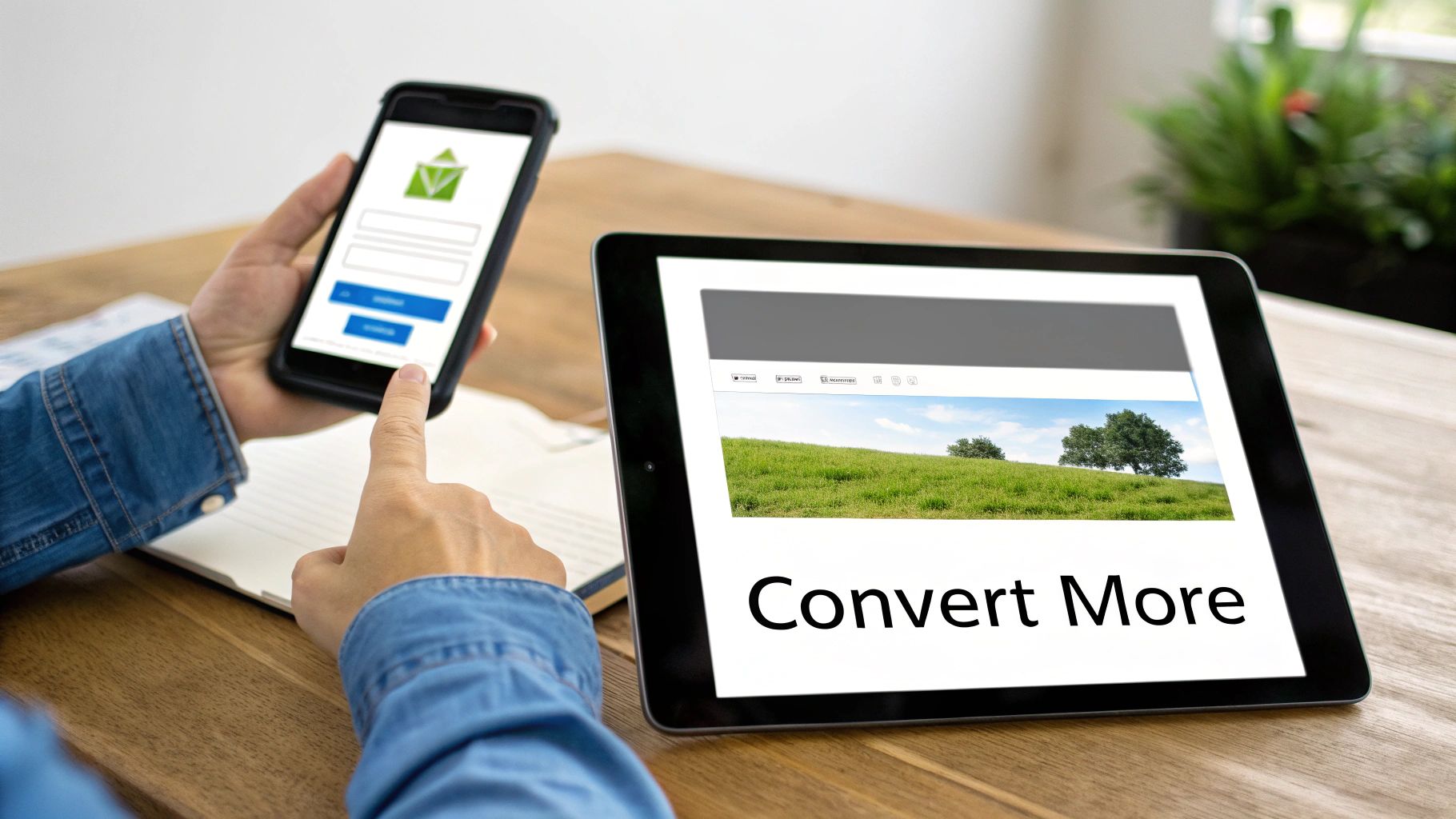
A slick ad gets the click, but it's your landing page that actually closes the deal. This is a critical distinction that many larger agencies, laser-focused on campaign metrics, completely miss. They often treat the landing page as an afterthought—a separate task for another department, if it gets addressed at all.
From my perspective as a hands-on consultant, that’s a huge mistake. The ad is just the opening line; the landing page is where the real persuasion happens. It’s that make-or-break moment where a click either becomes a customer or bounces right back into the digital ether. Real optimization of google ads means recognizing the post-click experience is just as important as everything that comes before it.
The Power of a Seamless Message Match
If there's one golden rule for a high-converting landing page, it's message match. This simply means the promise you make in your ad is immediately and obviously fulfilled the moment a user lands on your page. If your ad screams "50% Off Blue Running Shoes," your landing page better have a huge headline about that exact offer, front and center, with pictures of those blue shoes.
This is where bloated agencies often drop the ball. Their ad copywriters and web developers work in separate silos, leading to a jarring user experience where the page feels completely disconnected from the ad that brought them there. That confusion is a certified conversion killer.
As a consultant, I bridge that gap. I'm hands-on with both sides of this equation, ensuring every ad campaign has a dedicated, perfectly synced landing page. This creates a seamless journey that builds user confidence and sends conversion rates through the roof.
The ultimate goal for your landing pages is to convert visitors; master the strategies for website conversion rate optimization.
Beyond the Headline: User Experience Matters
A great message match gets people to stick around, but a killer user experience (UX) is what gets them to act. An agency might tick the box with a basic page, but as a specialist, I obsess over the small details that make all the difference.
I’m talking about things like:
Lightning-Fast Load Times: Did you know even a one-second delay in page load time can slash conversions by 7%? I prioritize clean code and compressed images to make sure pages load almost instantly.
A Single, Clear Call-to-Action (CTA): Your page should have one job. Whether it's "Buy Now," "Get a Quote," or "Download the Guide," that CTA needs to be obvious and compelling, not lost in a sea of other links.
Mobile-First Design: Over half of all web traffic now comes from mobile. Your landing page has to look and work flawlessly on a smartphone—think big, tappable buttons, readable text, and simple forms.
These aren't just design preferences; they are direct inputs into your Google Ads Quality Score. Google actively rewards advertisers who provide a great post-click experience with lower costs and better ad positions. This is a strategic advantage an agency's siloed structure simply can't deliver.
The Post-Click Journey in 2025 and Beyond
Google is looking deeper than ever at the entire user journey, not just that first click. This trend was cemented by a major algorithm update in early 2025 that completely reshaped the role of landing pages in ad optimization.
Before, the focus was mostly on the direct relevance between keywords, ads, and the page itself. But the February 2025 update rolled out a predictive model that now assesses your whole website's navigation quality. The system actually checks how easily users can find things like contact details or support pages after they click. Sites with a confusing or incomplete user journey get penalized.
This shift makes holistic, structural landing page optimization a core part of boosting campaign ROI. And this is exactly where a consultant's detailed oversight gives you a massive advantage over an agency’s disconnected, siloed approach.
Using AI and Automation Strategically
This is where so many big agencies get it wrong. They see Google’s AI as an “easy button"—a way to set accounts on autopilot so they can manage more clients with less effort. They fire off a templated report and call it a day.
That hands-off approach is just a crutch. It prioritizes their own efficiency over your results, and it’s a surefire way to leave money on the table.
My philosophy is the exact opposite. I don’t see AI as a replacement for a sharp marketing mind, but as an incredibly powerful tool that needs an expert to guide it. The real secret to optimization of google ads isn't just using AI; it's knowing how to steer it. True expertise comes from blending the machine’s raw number-crunching power with the strategic oversight only a human can provide.
Guiding Performance Max Without Giving Up Control
Performance Max (PMax) campaigns are the perfect example of this. The typical agency approach? Upload a few assets, set a budget, and let Google's black box take the wheel. That’s a recipe for disaster and wasted ad spend. As a specialist, I know PMax performs best when you feed it precise, high-quality signals.
Instead of letting the algorithm guess, I carefully curate every input it gets. This means getting my hands dirty.
Strategic Audience Signals: I feed PMax with your best first-party data, like customer lists and high-intent website visitor segments. This gives the AI a massive head start in finding the right lookalike audiences.
High-Quality Creative Assets: I don't just dump in a folder of random images and headlines. I provide a diverse mix of proven ad copy and visuals, ensuring the AI has strong creative building blocks to work with.
Constant Negative Feedback: This is the step most agencies skip because it takes time. I’m constantly reviewing placement reports and asset performance to exclude junk websites and shut down losing creative combinations. This is how you refine the algorithm's focus over time.
This turns PMax from a blind guesser into a guided missile. It’s about being the pilot, not just a passenger.
The difference between an agency and an expert consultant is that the agency trusts the machine to do the work. The consultant uses the machine as a tool to execute a smarter strategy. One hopes for results; the other engineers them.
Using Responsive Search Ads for Intelligent Testing
Responsive Search Ads (RSAs) are another area where a strategic human touch is a game-changer. An agency will load up an RSA with 15 headlines and four descriptions, let it run, and just report back on what Google says worked.
A consultant sees RSAs as a massive A/B testing lab.
My process is to use RSAs to gather data, then use human intelligence to figure out what it means. I’ll systematically test different value props, calls-to-action, and emotional hooks all within a single RSA. After a few weeks, Google’s data will tell me which individual assets are pulling the most weight.
But that’s where the real work begins. I dive into why those winning components resonated. Did headlines mentioning "free shipping" crush those focused on "quality"? I then take those insights to build new, even stronger ad copy and manually assemble ads that are laser-focused on the messaging that’s already proven to work. It's a level of strategic depth you won't get from an overburdened agency team.
Staying Ahead of AI Advancements
The world of Google Ads AI is always in motion, and keeping up is non-negotiable. Over its 25-year history, Google has made huge leaps in AI-driven campaigns. Take 2025 advancements, for example—audience signal targeting was expanded to App campaigns, and AI Max for Search was introduced to automate keyword and creative work. RSAs also got smarter AI-influenced capabilities for assembling headlines, giving us more transparent data. You can read more about these advancements in Google Ads AI on searchengineland.com.
An expert consultant is actively tracking and testing these new tools, folding them into your strategy where they make sense. A bloated agency? They’re often slow to adapt, stuck with an outdated playbook. This proactive, specialist-led approach ensures you’re always using the best tools available, guided by a strategy that puts your profitability first.
Common Questions About Google Ads Consultants
Choosing the right partner for your paid advertising is a big deal. When it comes to the optimization of Google ads, you've probably got some questions about the best way forward. Let's tackle the big ones and clear up why a specialist consultant is often the smartest move for your business.
How Is a Consultant Different from a Google Ads Agency?
It really comes down to direct expertise and accountability. When you hire an expert consultant, you’re working one-on-one with the specialist who’s in the trenches, building your strategy and optimizing your account.
There are no junior account managers or layers of bureaucracy diluting the message or slowing things down. This direct partnership means we get on the same page strategically and can communicate much faster. Your strategy gets built for your business goals, not pulled from some generic agency playbook. A consultant's success is tied directly to your ROI, creating a powerful drive for performance that you just don't get with a bloated agency model.
A huge chunk of your fee at a large agency covers their overhead—not your results. With a consultant, that investment goes directly into your account's profitability.
What Is the Biggest Mistake in Google Ads Optimization?
Without a doubt, the most common and expensive mistake is chasing vanity metrics. I see it all the time from businesses who've been burned by agencies. They get completely fixated on a high click-through rate (CTR) or a low cost-per-click (CPC) without ever asking if those numbers are actually making them money.
A high CTR is useless if none of those clicks ever convert. A smart optimization strategy is laser-focused on metrics that hit your bottom line, like Cost Per Acquisition (CPA) and Return On Ad Spend (ROAS). I'd rather pay a slightly higher CPC for a click that brings in a profitable customer than celebrate a cheap click from someone who was never going to buy anyway.
How Long Does Google Ads Optimization Take to Show Results?
You can see the needle move on small tweaks like bid changes within a few days, but real, lasting optimization is a long game. Realistically, you should expect to see significant, data-backed improvements in your campaign performance within the first 30 to 90 days.
That timeframe gives me enough runway to gather solid data, test different ad copy and creative, refine your landing pages, and adjust the strategy based on what's actually driving profitable conversions. It's about a marathon of continuous improvement, not an agency's "set it and forget it" sprint.
Can a Consultant Handle a Large Ad Spend Like an Agency Can?
Absolutely. An expert consultant specializes in efficiency, not just throwing more money at a problem. In fact, I've found that a dedicated specialist often manages large budgets more effectively than an agency that might spread your account across a team of generalists.
My edge is in the meticulous oversight and advanced strategies designed to squeeze the maximum return out of every single dollar you spend. The focus stays locked on your ROAS, no matter the budget. This prevents your ad spend from getting wasted on ineffective tactics or standardized processes—a common pitfall when agencies try to scale without adding real expertise.
Ready to see what a dedicated, expert-led approach to Google Ads optimization can do for your bottom line? At Come Together Media LLC, I provide the one-on-one strategic partnership that bloated agencies can't. Let’s build a profitable campaign together. Book your free consultation today.




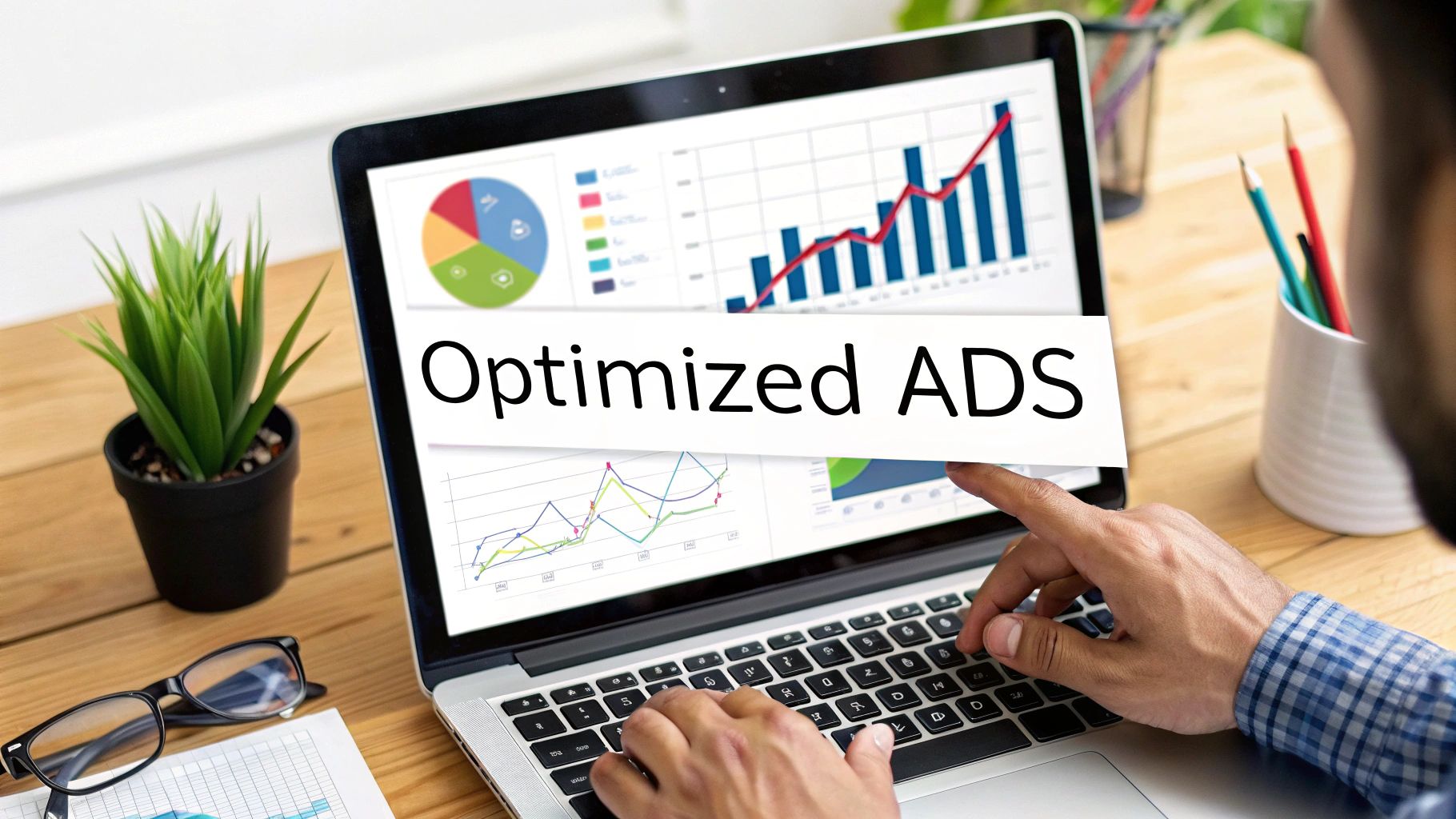
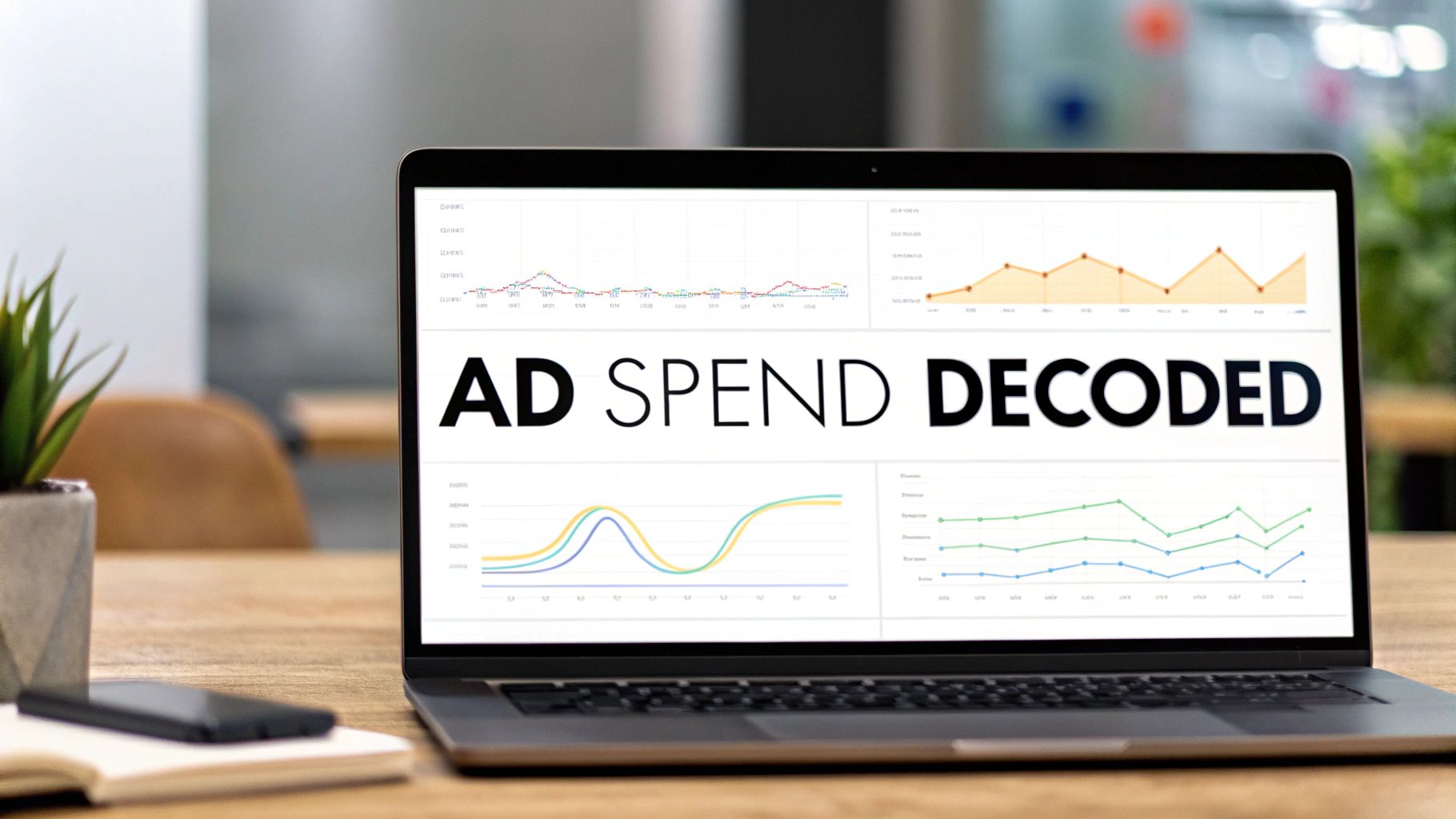
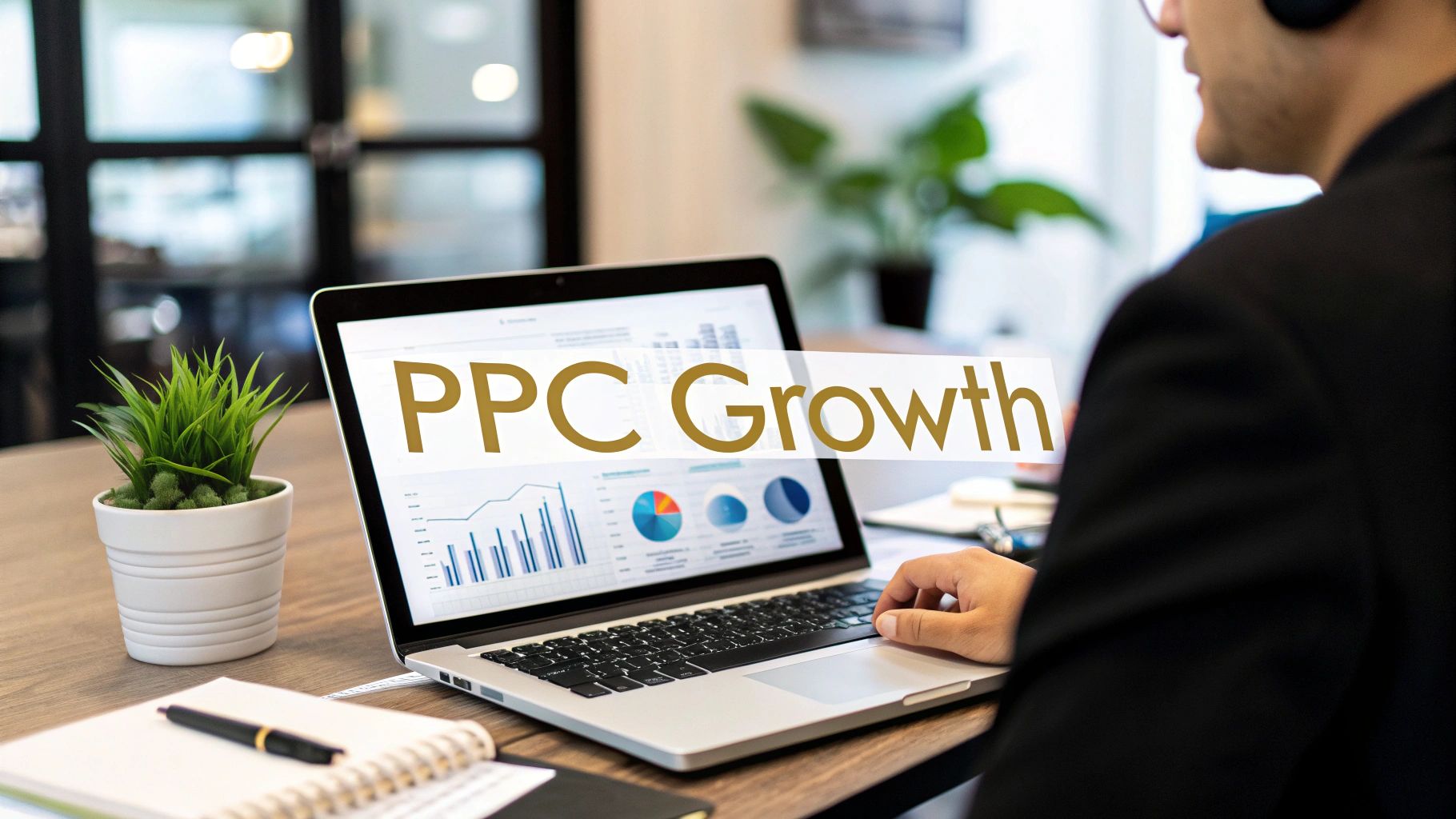
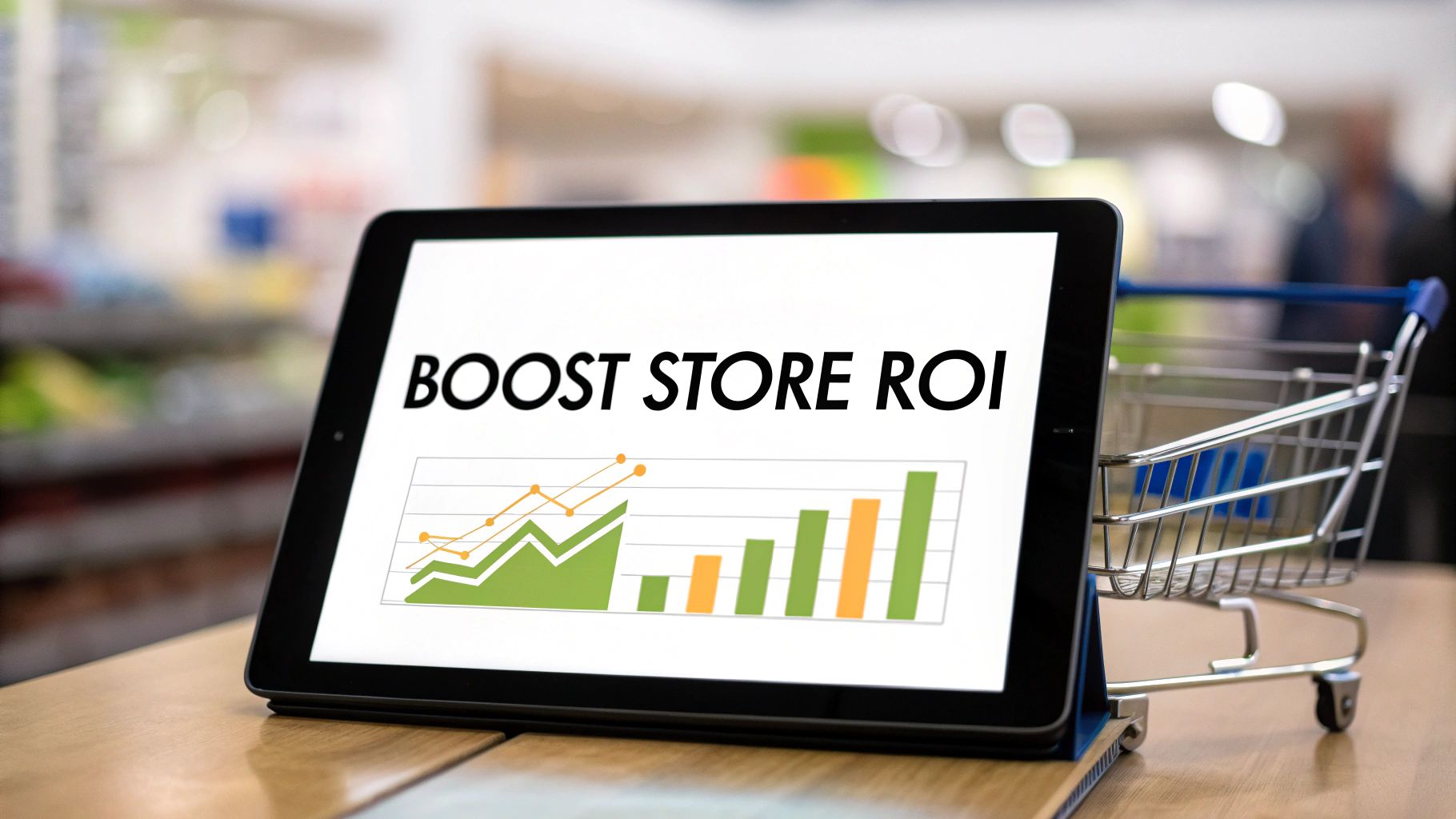
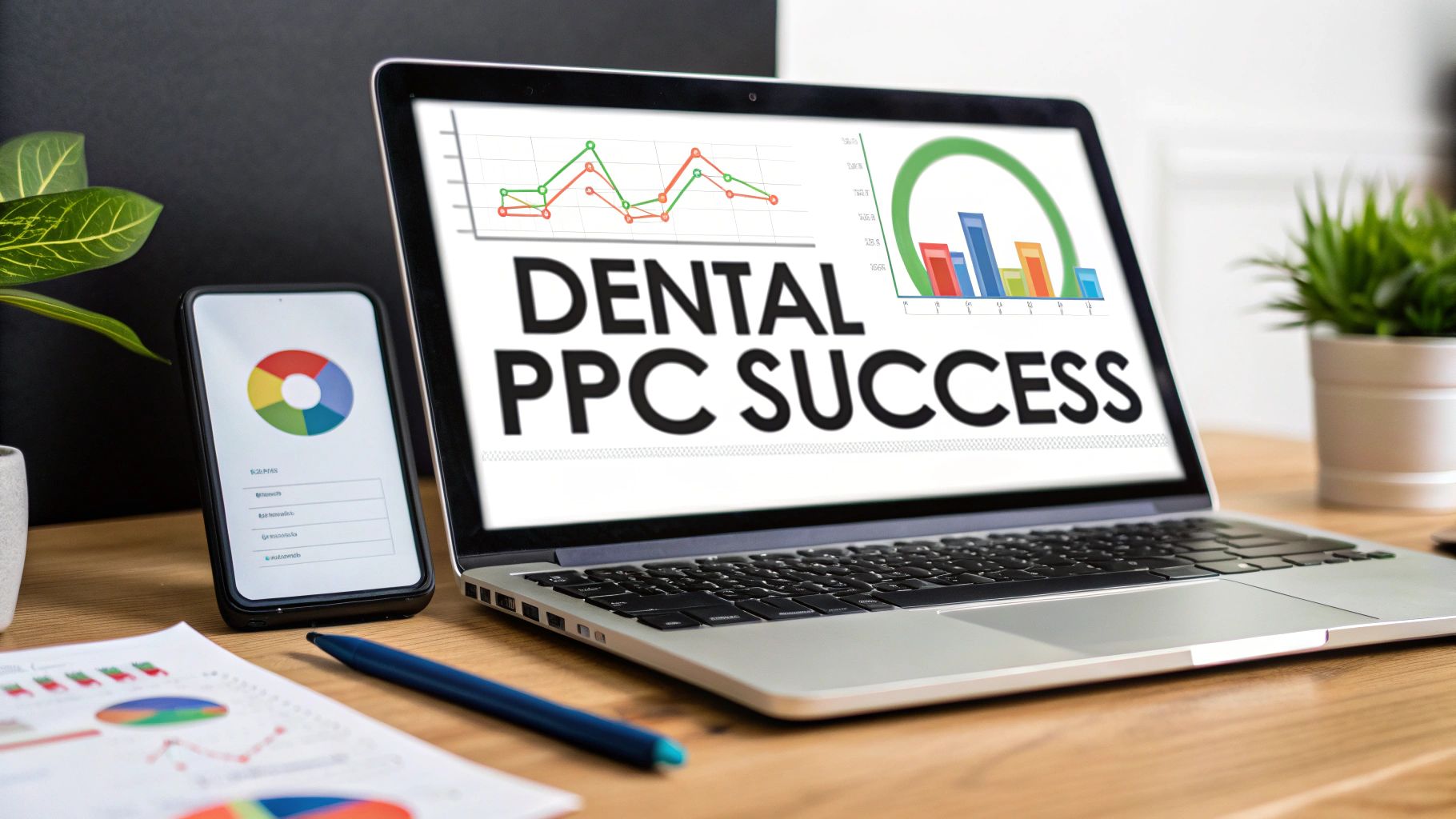
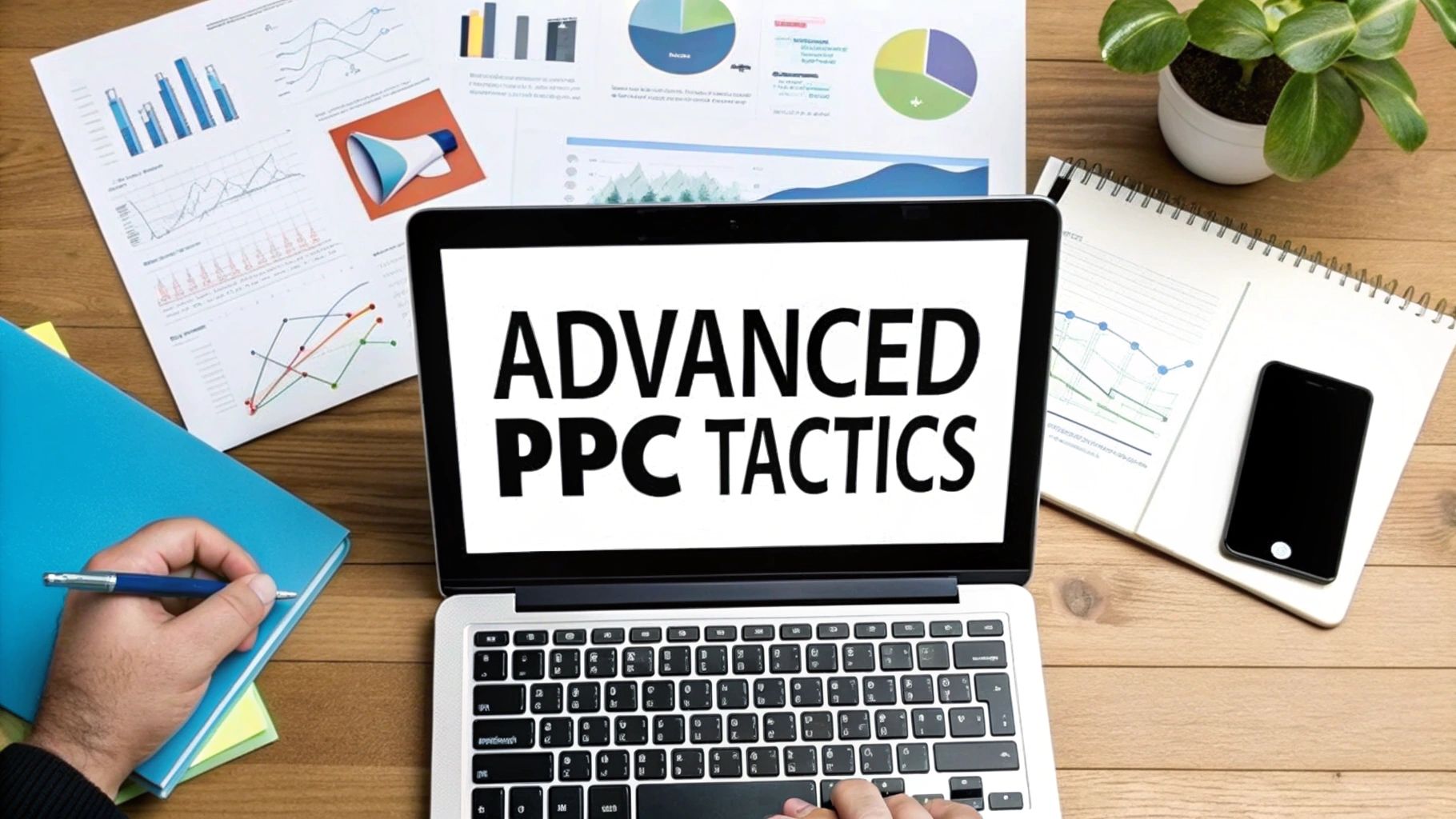
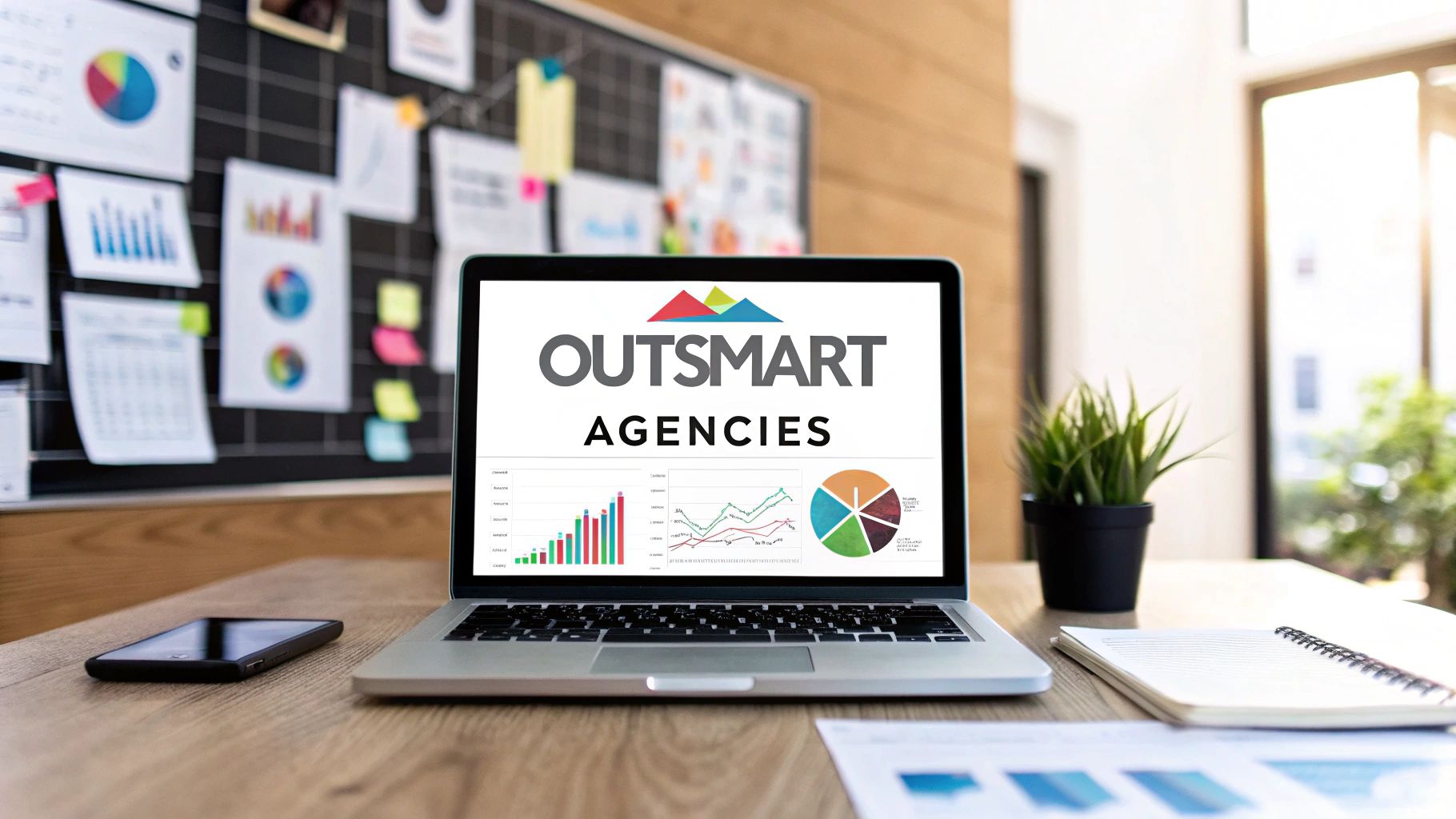
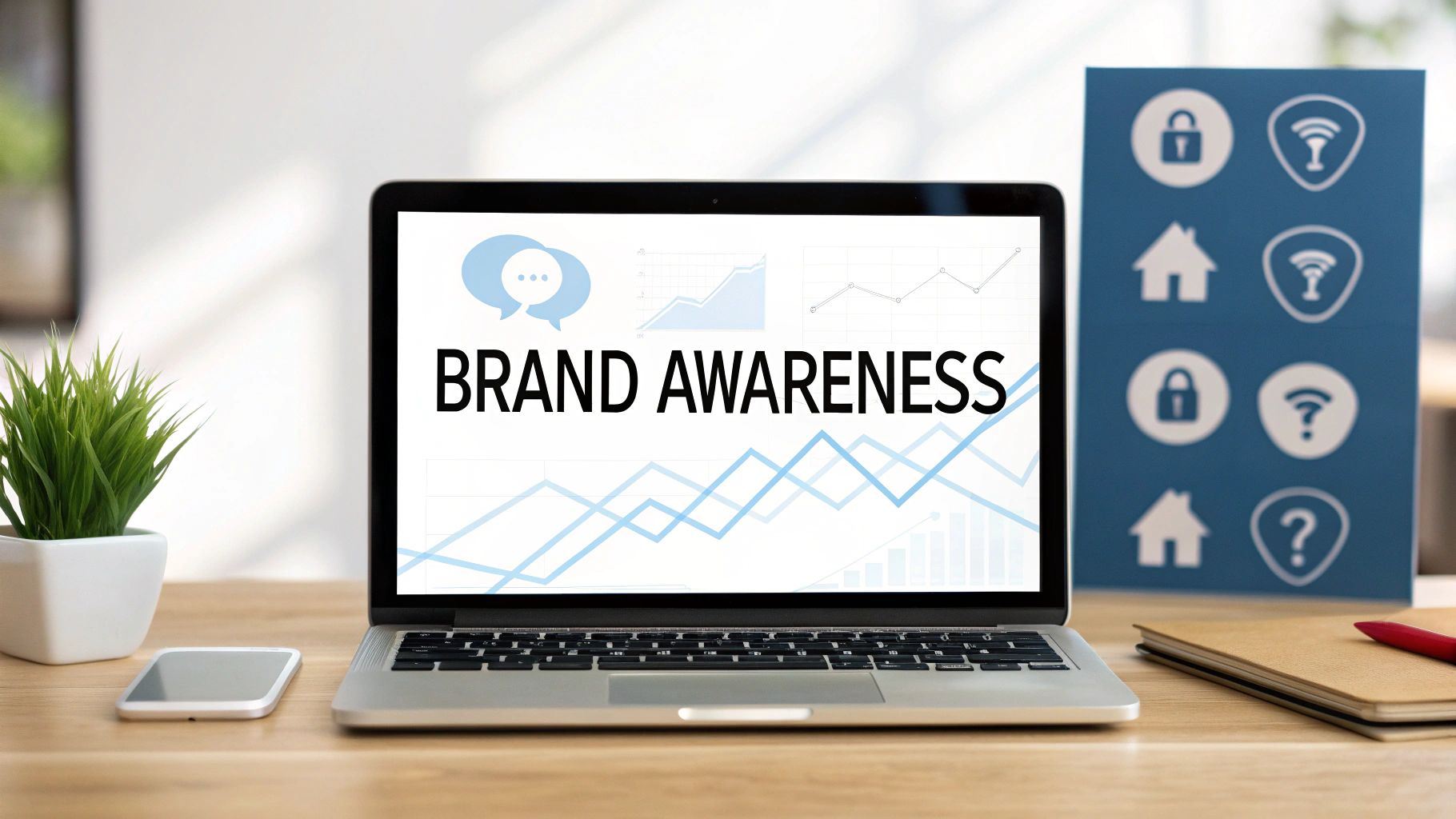
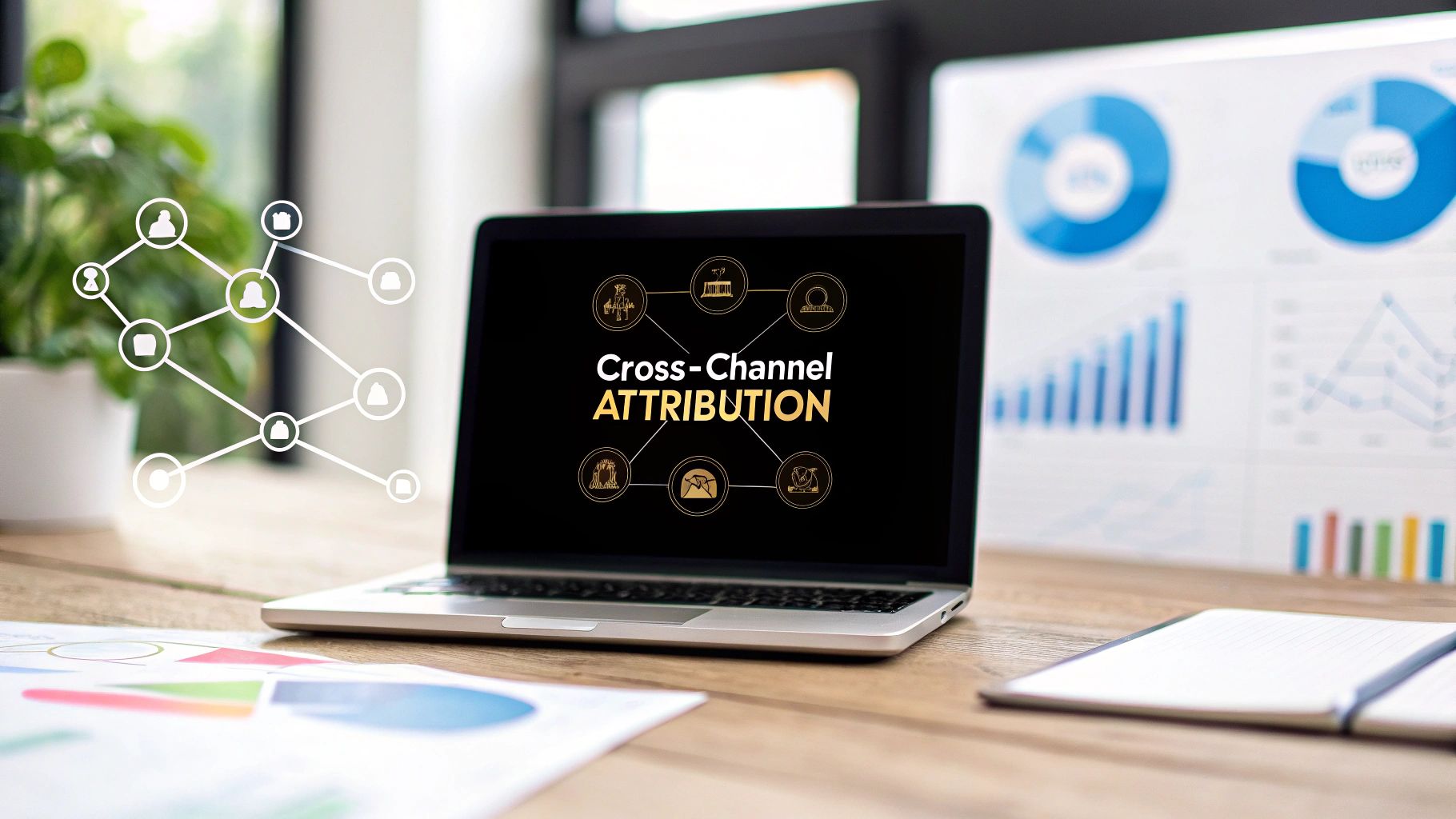
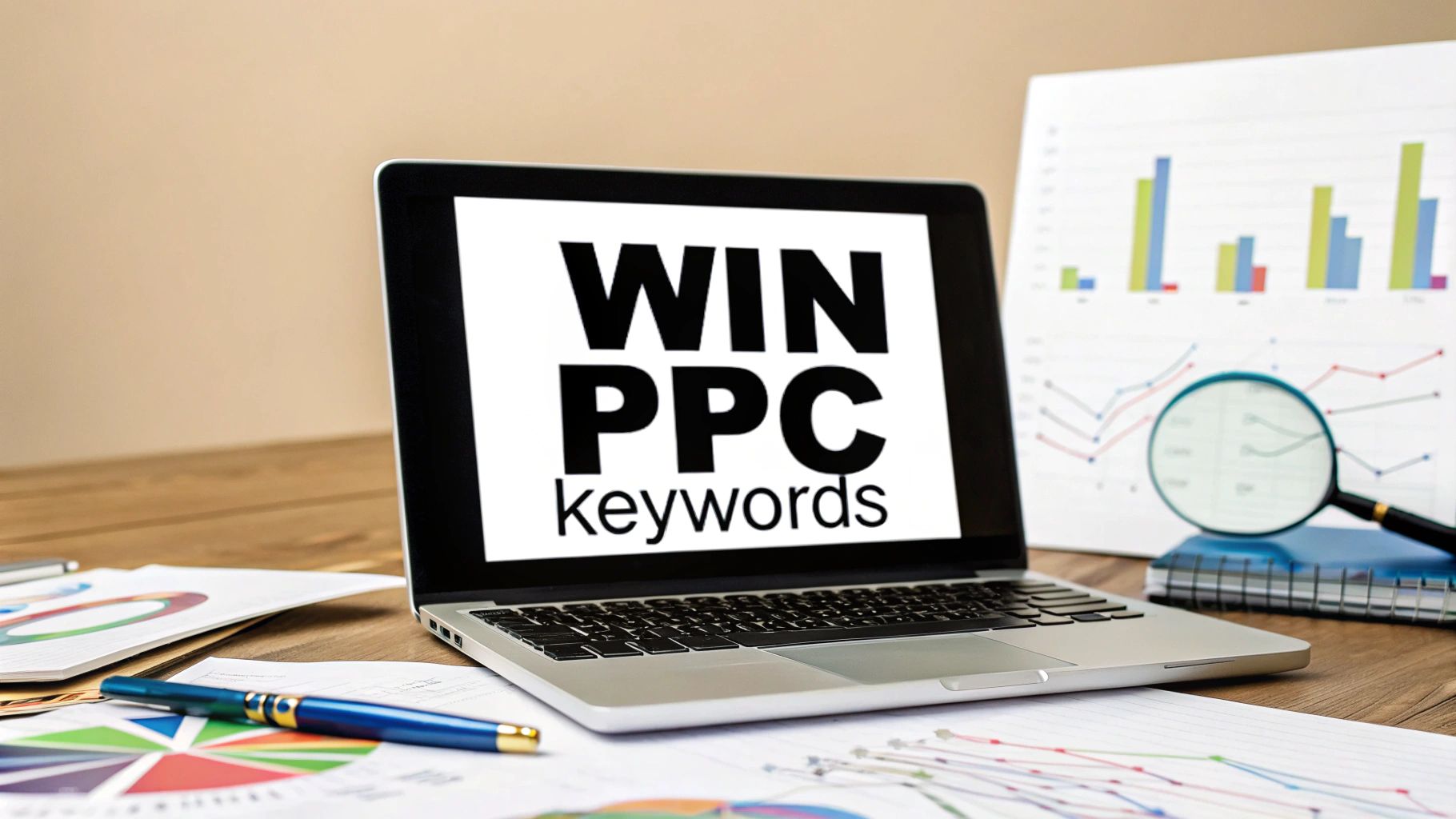
Comments